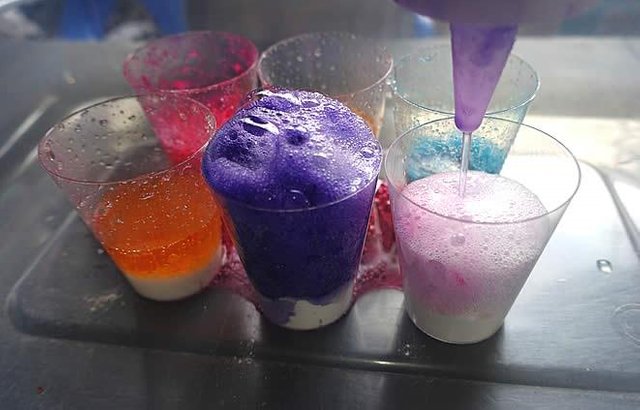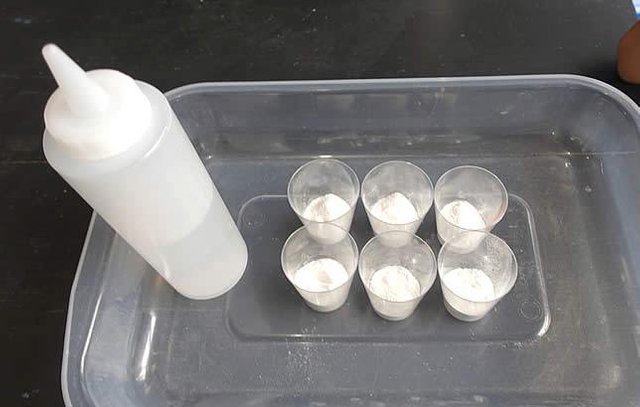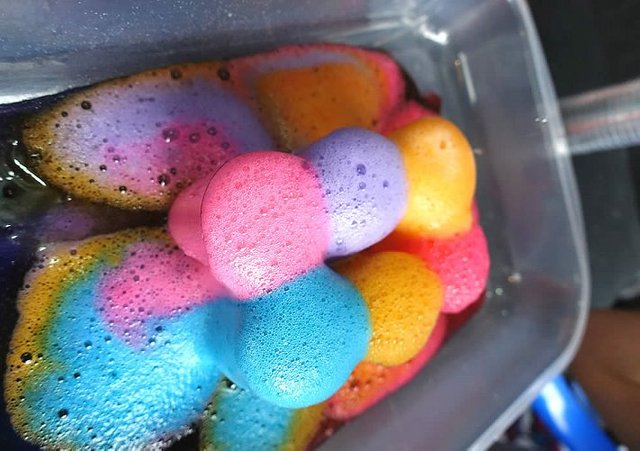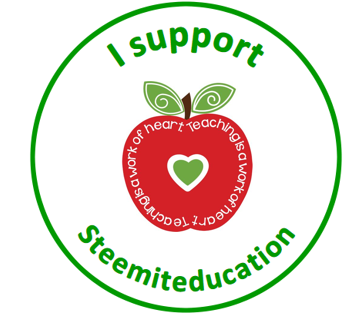Yet again we were stuck at home with another round of colds, flu and fever. Yesterday’s trip to the doctor ended up with a prescription leaving the entire family housebound for the next three days while we recuperate and rid ourselves of this nasty bug that decided to invade my people, including my little boy. This meant that we needed to whip put the creativity once again to keep our kiddo entertained, stimulated and well-rested. Today called for the MAGIC OF SCIENCE!
Brace yourselves, things can get messy with this one! It might be a good idea to set this experiment out on a waterproof sheet, in the bath tub or outdoors is possible. To make the experiment seem more "magical", do the preparation work when your kids aren't looking - this way they will get an even bigger surprise when the colours do appear.

FIZZING COLOUR SURPRISE!
You will need the following apparatus for this activity:
- Eager little scientists
- A muffin tin or little cups placed in a container (helps with the mess)
- Baking soda (or bicarbonate of soda)
- Food colouring, in a variety of colours
- Vinegar (a squeeze bottle is preferable for little hands)
A part from the above, you will also need a good dose of patience. While the results are instant and the activity fits the attention span of the tots, if you are a parent you will know that activities like this hardly ever go "as planned". But that's OK, let the kids steer the lesson and allow them to explore freely and in their own way. While this is an educational task, at this age, it is all about learning through play.


THE EXPERIMENT
Preparation:
Step 1 - add a drop of food colouring to each muffin cup (using different colours for each one).
Step 2 - cover each drop with a teaspoon of baking soda or two.
The reaction:
Introduce your little ones to the set up. Discuss the white granules (baking soda) and let the youngster feel the granules by allowing them to grind some between their fingers. Do the same with the vinegar, let them smell it and taste a tiny drop. Encourage them to be curious and ask questions.
Using a squeeze bottle, let your kids squeeze vinegar into the muffin cups, one cup at a time. If you don’t have a squeeze bottle, you can use a teaspoon to pour the vinegar in. Watch as their eyes light up as magic unfolds before them.
The result:
The result is an explosion of fizzing colour! When vinegar and baking soda come in to contact with each other, a chemical reaction takes places, resulting in a fizzing action. This fizzing draws the food colouring up, mixing it into the solution as it rises.

When baking soda is mixed with vinegar, a reaction takes place. The two chemicals, acetic acid and sodium bicarbonate, do not mix with each other; therefore, causing a reaction. When the two chemicals are mixed, a new chemical is formed called carbonic acid. - https://www.village-bakery.com/makes-baking-soda-vinegar-react/
Source Link: http://busytoddler.com/2015/10/fizzy-fun/
This science experiment is safe to do at home, if the kids do happen to ingest some of the ingredients, they will come to no harm (probably cough a bit). This makes it ideal for messy play too. Let the little ones stimulate their senses and learn colours at the same time. Let them touch each colour, let it stain their little hands even, and name the colours as you go along. Ask them which colour they like the most and why!
Of course, this activity is not limited to the home, teachers can administer it in their classrooms as a group activity. It is also a perfect demonstration to accompany some theory on how and why chemical reactions take place.
Much love - @sweetpea


This post has been added to the latest "Six of the Best" New Mapster Contest.
This is to showcase the work of new MAP members.
You can request to join MAP here.
Voting takes place within the MAP chatroom, but everyone can upvote their favourite articles by going to the MAP32 page.
Downvoting a post can decrease pending rewards and make it less visible. Common reasons:
Submit
Thank very much! Yay! :)
Downvoting a post can decrease pending rewards and make it less visible. Common reasons:
Submit
Yeah teachers can administer it in their classrooms as a group activity. So that one can understand how reactions take place
@sweetpea
Kindly visit my blogs if u dont mind
Downvoting a post can decrease pending rewards and make it less visible. Common reasons:
Submit
Thanks for the visit :)
Downvoting a post can decrease pending rewards and make it less visible. Common reasons:
Submit
Cool! That looks super fun... 😊
Downvoting a post can decrease pending rewards and make it less visible. Common reasons:
Submit
It really is!
Downvoting a post can decrease pending rewards and make it less visible. Common reasons:
Submit
You always show very funny experiments. The colors are very striking and children get excited about that.
Downvoting a post can decrease pending rewards and make it less visible. Common reasons:
Submit
Kids do love colours, and this is a wonderful way to teach them their colours too!
Downvoting a post can decrease pending rewards and make it less visible. Common reasons:
Submit
I love all the fun stuf you come up with @sweetpea. I must try some of them with Jude!
Downvoting a post can decrease pending rewards and make it less visible. Common reasons:
Submit
Thanks @jaynie, I am sure Jude the dude would have a ball trying out some of the experiments!
Downvoting a post can decrease pending rewards and make it less visible. Common reasons:
Submit
@sweetpea DEFINITELY!!! :)
Downvoting a post can decrease pending rewards and make it less visible. Common reasons:
Submit
STOPDownvoting a post can decrease pending rewards and make it less visible. Common reasons:
Submit
Oooh, this is going to run to do with the kids over summer!
Downvoting a post can decrease pending rewards and make it less visible. Common reasons:
Submit
What a fun experiment!!! Welcome to Map!!
Downvoting a post can decrease pending rewards and make it less visible. Common reasons:
Submit